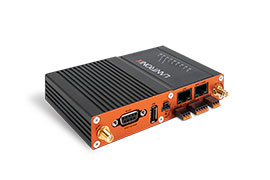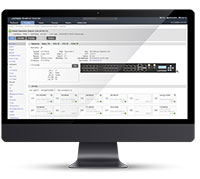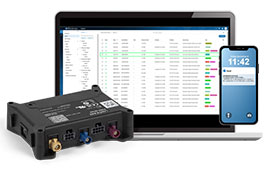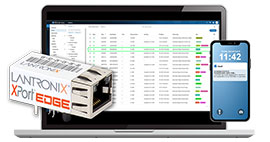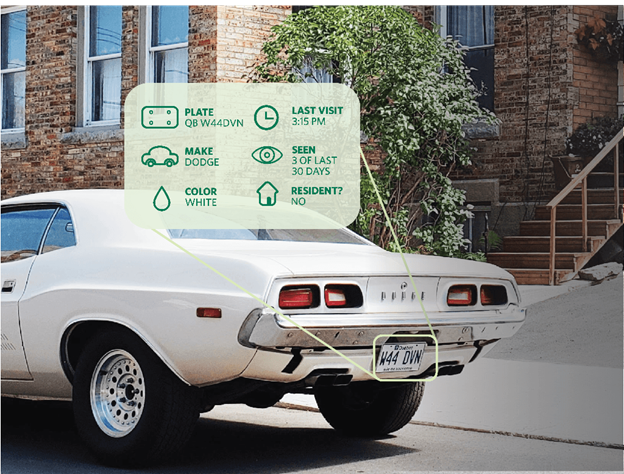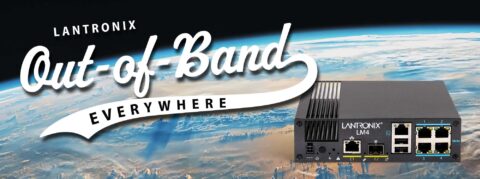
Delivering on the Promise of Smart Cities With IoT Technologies
How Lantronix Supported Flock Safety in Creating a Community Safety Solution
According to the International Data Corporation’s (IDC) October 2020 “FutureScape” report, smart city investment by communities, utilities, telecom providers and consultants will increase to $203 billion by 2024. The report predicts that by 2025, 30 percent of cities will adopt IoT, artificial intelligence and digital twins to create a hybrid physical/digital solution to improve remote management of critical infrastructure and services.
The report also states that by the close of 2021, almost half (45 percent) of communities will transition to hybrid workforces that depend on cloud-based apps, digital collaboration tools and mobile technologies. To accomplish these lofty goals, by 2023, 20 percent of midsize urban areas plan to hire staff specifically tasked with moving the municipalities in the direction of digital transformation and innovation.
In addition, according to a 2020 Institute of Electrical and Electronics Engineers (IEEE) survey of chief information officers and chief technology officers who work at cities and municipalities, more than half (55 percent) of those surveyed have sped up and increased adoption of resources in the cloud. Fifty-one percent have increased adoption of artificial intelligence and machine learning while 52 percent have accelerated 5G adoption.
Cities’ increase in the speed of adoption of cloud-based and remote environment management adoption is in great part due to the COVID-generated shift to work-from-home, which resulted in a flood of personal devices into the workplace.
Whether it’s for remote workers or neighborhood safety, Lantronix software, hardware and connectivity services provide cities with a secure path to smart IoT and cloud-based solutions.
# # #

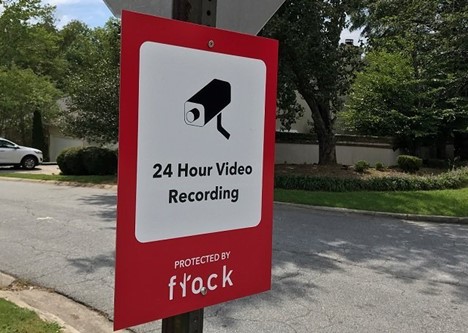
Lantronix Case Study: Flock Safety Automated License Plate Recognition System
Created by Flock Safety, the automated license plate recognition (ALPR) system supports citizens and law enforcement in fighting non-violent crime in their communities. Using 24-hour wireless cameras, the ALPR system gathers license plate information that can be used by local police to investigate crime. To bring its solution to market, Flock Safety worked closely with Lantronix.
Challenge: Create an Automated License Plate Reader Camera Solution
To make the ALPR device both functional and affordable for the application, the Flock Safety team utilized Lantronix’s Open-QTM 624A System on Module (SOM). Flock Safety’s designers worked closely with Lantronix’s engineering team for SOM customization and benefited from the engineers’ experience with cloud connectivity and edge compute technologies.
Solution: Lantronix Open-Q 624A SOM and Development Kit
Utilizing Lantronix’s Open-Q 624A SOM, its Development Kit and a custom carrier board designed by Lantronix’s engineers, the Flock Safety team was able to quickly and cost-effectively build a purpose-built core platform for its safety system. The ALPR system features wireless camera technology with remote device management and a long-lasting battery.
Security features include secure access by authorized users and assurance of privacy for neighbors. The SOM’s FCC/IC pre-certified Wi-FI®/BT module saved time and money to create a prototype and quickly go to market.
Results: Flock Safety Cameras Fight Crime With Technology
Utilizing Lantronix’s Open-Q 624A SOM and engineering expertise, the Flock Safety design team created its breakthrough ALPR system that combines powerful processing with security. Utilizing Lantronix’s technologies helped Flock Safety contain development costs, quickly build a prototype and go to market with a powerful yet affordable safety device.
Each camera can capture 15,000 vehicles per day and send real-time alerts to law enforcement with information including the license plate number, state, color of the car and if it is on the FBI’s NCIC list of stolen vehicles.
Flock Safety’s camera systems are currently being used in more than 700 cities across 38 states to help solve crimes. Law enforcement agencies have reported reductions in crime as high as 60 percent or more.
“Utilizing Lantronix’s Open-Q 624A SOM and Development Kit helped us affordably develop a prototype and quickly bring our Flock Safety system to market.”
Matt Feury, Founder & CTO
Flock Safety
“Lantronix’s custom modules provide a great platform for fast-tracking product development of high-performance embedded devices.”
Matt Feury, Founder & CTO
Flock Safety
For more information, click here to view the full case study.
# # #
Sidebar:
Trends in Smart City Technology Adoption
According to IDC’s “FutureScape” report, smart cities are rapidly adopting new technologies and introducing automation as they move to a cloud-based environment, resulting in the following trends:
- Increase in Cybersecurity Concerns. In 2021, a disturbing 20 percent of digital devices deployed by urban governments will be compromised by malware and ransomware. The report advises using artificial intelligence and machine learning to redesign IoT ecosystems and to monitor and protect energy grids and water networks from attacks.
- Move to Digital Tools. By 2022, 40 percent of police agencies will use digital tools, such as video streaming and shared workflows, to improve community safety. IDC expects a shift of emphasis away from violent crimes to the lower-level crime, requiring greater investment in core technologies to handle with these issues.
- More Private Transportation Options. Forty percent of cities with 500,000 or more residents plan to adopt technologies to increase private transportation strategies. These services could include mobility-as-a-service providers, car-sharing services, bikes and electric scooters.
- Eliminate the Digital Divide. An overwhelming 75 percent of cities will intervene to end the digital divide in their communities by 2025. This will likely be built on high-speed connectivity designed as a public utility. To provide delivery of 20 percent of municipal services and products by 2026, cities will turn to digital and hybrid digital/physical environments.
Sources:
https://sfmagazine.com/technotes/february-2021-tech-trends-for-smart-cities-in-2021/
https://www.idc.com/getdoc.jsp?containerId=US45831620
